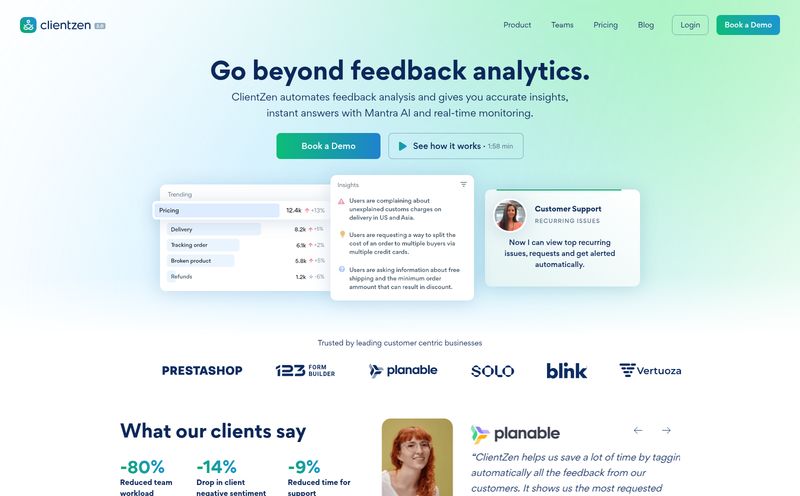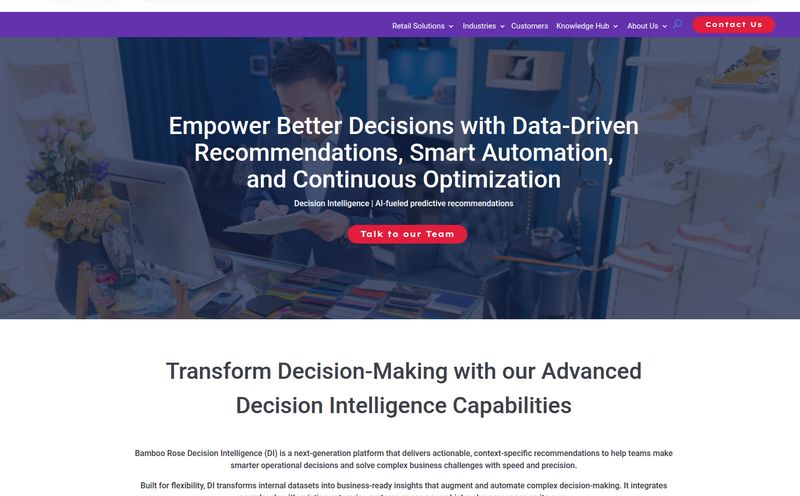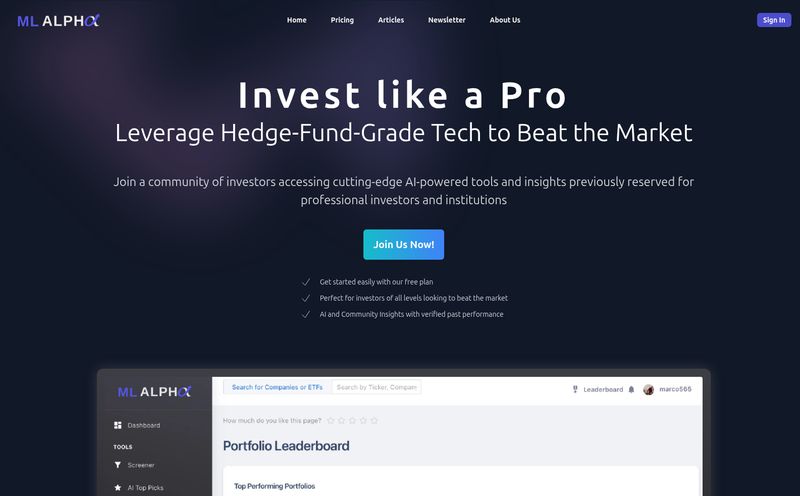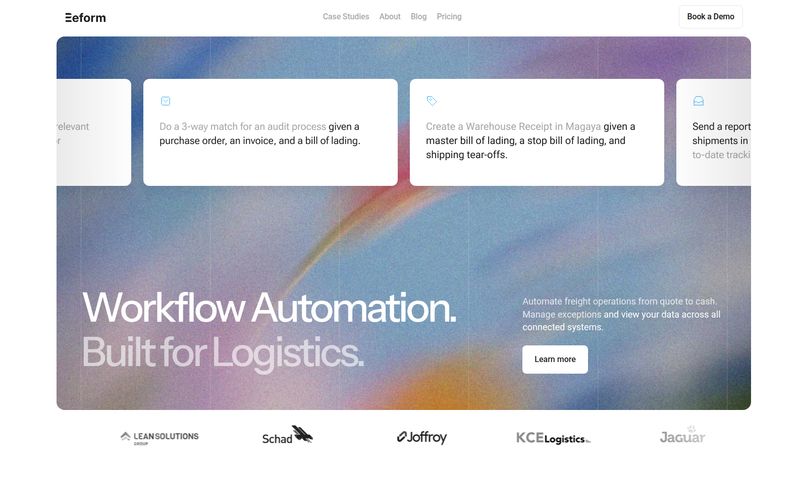The world of ESG (Environmental, Social, and Governance) investing is… a bit of a mess. It feels like every company on the planet suddenly has a sustainability report, and every investor is supposed to magically know how to read these tea leaves. As someone who’s been in the digital marketing and traffic game for years, I’ve seen my fair share of clients pull their hair out trying to make sense of it all. It’s the wild west, and everyone's claiming to have the best map.
So when a tool like Clarity AI comes along, waving a big flag that says “AI-powered sustainability,” my professional curiosity gets piqued. Is this the real deal? The tool that finally brings some, well, clarity to the chaos? Or is it just another layer of complex tech on an already confusing topic? I decided to take a look under the hood.
So What Exactly is Clarity AI?
At its core, Clarity AI is a data and technology platform. But that’s a pretty bland description. Think of it more like a hyper-specialized research firm staffed by robots who do nothing but eat, sleep, and breathe sustainability data. It’s designed for the big players—asset managers, banks, wealth managers, the folks managing serious capital who can’t afford to just guess when it comes to compliance and sustainable investing.
They use artificial intelligence to scan a massive amount of information and deliver insights on sustainability. This isn't just about whether a company recycles its paper. It’s about deep, nitty-gritty stuff like climate risk, impact metrics, and alignment with dense global regulations. The goal is to give these financial institutions a single, reliable dashboard to help them invest, report and comply with confidence.
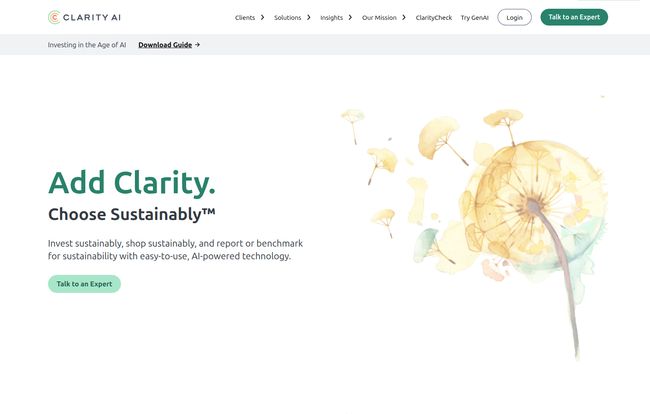
Visit Clarity AI
The Features That Actually Matter
A features list can be mind-numbing, so let's skip the bullet points and talk about what actually moves the needle. I’ve seen countless platforms boast about their features, but only a few truly solve a painful problem. Clarity AI seems to focus on a few very painful ones.
The AI-Powered Brains of the Operation
This is their headline act. The platform’s AI doesn't just pull data; it claims to analyze it for you. In a world drowning in information, that's a huge promise. It’s the difference between being handed a 1,000-page book and being given a one-page summary with the most important plot points. For a fund manager who needs to assess the ESG risk of hundreds of companies, this efficiency is everything. It replaces what used to take a whole team of human analysts weeks to accomplish.
Taming the Regulatory Beast
Here’s where I think the real money is. Navigating financial regulations is a nightmare. And now, you have a whole new layer of sustainability rules like the EU’s Sustainable Finance Disclosure Regulation (SFDR). These aren’t suggestions; they’re complex legal requirements with serious penalties. I've heard from colleagues in finance that this is one of their biggest headaches. Clarity AI positions itself as a guide through this regulatory jungle, offering specific tools to help firms meet their obligations. For many, this feature alone could justify the entire platform.
Customization and Integration: Does It Play Well with Others?
One thing big organizations hate is a tool that lives on an island. They need data to flow. Clarity AI offers both a web app and, more importantly, an API. That little three-letter word—API—is gold for tech teams. It means they can pull Clarity’s sustainability insights directly into their own proprietary systems, dashboards, and workflows. They also talk a big game about being “fully customizable,” which is always something I’m skeptical of. Usually it means you can change the logo and a few colors. But if it truly allows institutions to tailor the data and models to their specific investment philosophies, then that’s a powerful differentiator.
The Good, The Bad, and The… Complicated
No tool is perfect, and I’ve learned to look for the trade-offs. Here’s my honest take on where Clarity AI seems to shine and where you might want to pause.
On the plus side, the sheer scope of data coverage combined with the AI analysis is impressive. It’s a powerful one-two punch. The focus on efficiency and, as I mentioned, the heavy emphasis on regulatory support are massive selling points. It’s clear they understand the real-world pressures their customers are under.
Now, for the other side of the coin. The first thing that stands out is that this isn't a tool for beginners. You likely need some in-house expertise to get the most out of it. This isn't like signing up for a simple social media scheduler; its a pro tool for pros. And that brings me to a point of healthy skepticism I have for any AI-driven platform: data accuracy. AI is powerful, but it's not infallible. It’s only as good as the data it’s trained on, and there’s always a risk of errors or “hallucinations.” I would want to know a lot more about their data verification processes before betting the farm on its outputs.
Let's Talk Money: The Elusive Clarity AI Pricing
Ah, my favorite part. I went looking for a pricing page, and... surprise, surprise, there isn't one. Instead, you get the classic “Talk to an Expert” button. As a user, I find this frustrating. As a business professional, I get it. Enterprise software isn't sold like a $10/month subscription.
The price will almost certainly depend on the size of your institution, the assets you manage, which specific modules you need, and how much you’ll be using the API. It’s a bespoke solution with bespoke pricing. My advice? Don’t go into that sales call blind. Have a clear list of your requirements, your deal-breakers, and the specific problems you're trying to solve. That's the only way you'll get a quote that actually reflects your needs.
Who is This Really For? (And Who Should Steer Clear?)
After looking at the platform and its messaging, the ideal user profile is crystal clear. Clarity AI is built for large-scale financial institutions. We’re talking global banks, multi-billion dollar asset management firms, and wealth managers who have entire teams dedicated to compliance and ESG strategy. These are organizations that feel the pain of regulatory reporting daily and have the budget and technical resources to implement a sophisticated tool.
Who should probably pass? If you're an individual investor, a small advisory firm just starting to think about ESG, or a company without a dedicated strategy, this is likely overkill. It’s like buying a professional film crew’s camera rig to shoot your kid’s birthday party. It's too much horsepower and you'd be better off with a simpler, more accessible solution.
Frequently Asked Questions about Clarity AI
- What is Clarity AI in simple terms?
- Think of it as a super-smart research assistant for big investors. It uses AI to analyze massive amounts of data on company sustainability, risk, and climate impact, helping financial institutions make more informed decisions and meet regulations.
- Does Clarity AI help with specific regulations like SFDR?
- Yes, this seems to be one of its major strengths. The platform has tools and modules specifically designed to help financial firms comply with complex sustainability regulations like the EU's SFDR.
- Is Clarity AI suitable for small investors?
- Probably not. Its features, complexity, and enterprise pricing model are all geared towards large financial institutions like banks and asset managers, not individual investors or small businesses.
- How does Clarity AI get its data?
- While they don't list every single source, it's a combination of public information (like company reports), third-party data providers, and their own proprietary AI models that analyze and score this information. The key is the AI layer that interprets the raw data.
- Can I integrate Clarity AI with my own systems?
- Yes. They offer an API (Application Programming Interface), which allows your tech team to feed Clarity AI's data and insights directly into your company’s existing software and dashboards.
- Why isn’t the pricing for Clarity AI public?
- This is common for enterprise-level software. Pricing is typically custom-quoted based on the specific needs, size, and usage of the client organization. You have to contact their sales team for a quote.
My Final Take
So, is Clarity AI cutting through the fog? From what I can see, for its intended audience, the answer is a pretty solid yes. It’s a serious, professional-grade platform aimed at solving a very real, very expensive problem for the financial industry. It’s not a magic wand, and it requires both budget and expertise to wield effectively.
In the end, tools like Clarity AI are a sign of where the market is going. ESG and sustainability are moving from a fuzzy, feel-good concept to a hard, data-driven discipline. The fog around it all is still thick, but it looks like Clarity AI is one of the companies building the high-powered headlights needed to navigate it. And in today’s market, that’s a valuable thing indeed.
